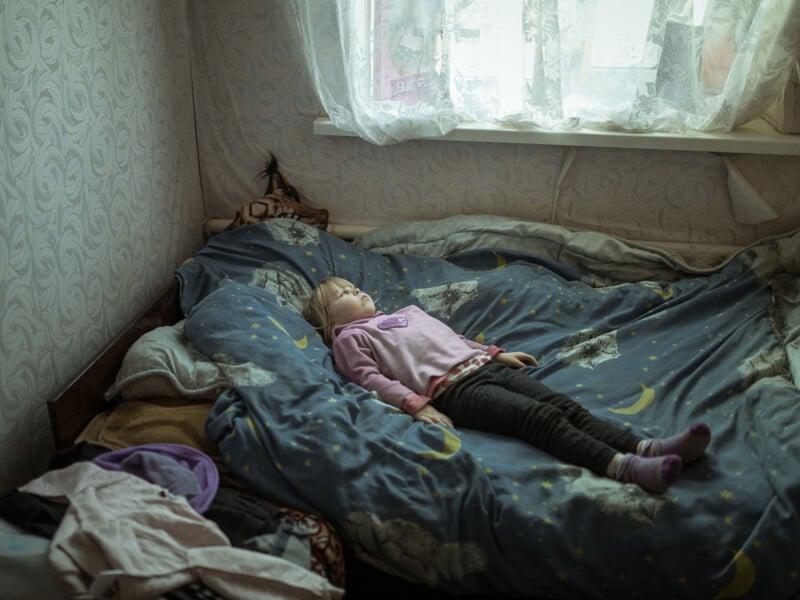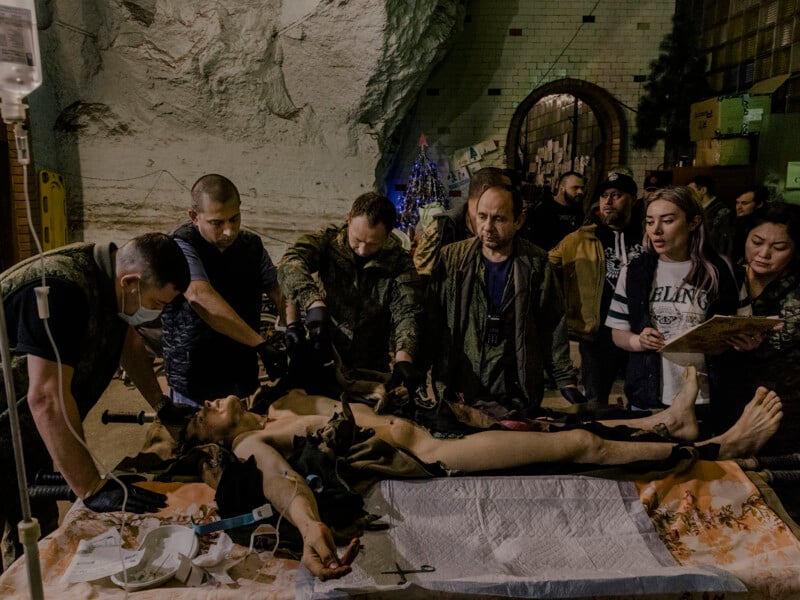World Press Photo Apologizes for Controversial Placement of Photos From Ukraine

World Press Photo apologized for its controversial decision to present two award-winning images captured by two different photographers as a thematic pair. One of the images showed a six-year-old Ukrainian child suffering from panic attacks following Russian artillery shelling, while the other showed a wounded pro-Russian militant.
As shown in PetaPixel‘s coverage of this year’s World Press Photo winners, the organization presents award-winning photographs by region. This means that winning photos from Europe, like Florian Bachmeier’s photo of the Ukrainian child, Beyond the Trenches, and photographer Nanna Heitmann’s image of the wounded pro-Russian soldier, Underground Field Hospital, were naturally going to be in the same broad “Europe” category.
However, the controversy arose when the World Press Photo website took this geographical similarity further and described the two images as paired without presenting vital context.
“The global jury and World Press Photo apologize for describing these two works, Underground Field Hospital by Nanna Heitmann and Beyond the Trenches by Florian Bachmeier, as paired. There is an obvious difference between a child suffering from the effects of war, and the suffering of a soldier from the invading forces, which are causing this suffering,” the World Press Photo said today in a statement.
The World Press Photo organization goes on to say that it should have presented these two images with additional context, including that “According to the United Nations, as of February 21, 2025, ‘more than 12,654 civilian men, women, girls, and boys have been killed, and over 29,392 injured’ since Russia began its full scale invasion. Eighty-four percent of these casualties were in Ukraine-controlled territory. Ukrainian energy infrastructure, medical facilities, homes, and school buildings have also been attacked.”

However, World Press Photo did not include that information when publishing the award-winning images last week. It admits that it should have fully and openly acknowledged the harsh realities of Russia’s invasion of Ukraine and more thoughtfully presented the winning works.
“We should not have presented these two photos as a pair as it suggests they should be viewed and understood only in dialogue with one another. Doing so creates an overly simplified and false equivalency, and sidelines the story that each one of them deploys on its own. Those stories; meanwhile, only point to two aspects of the ongoing Russian war on Ukraine,” says World Press Photo global jury chair Lucy Conticello.
World Press Photo has published an updated jury report document that outlines the organization’s decision-making process and its thoughts on all award-winning images this year.
It is an especially timely report given that the controversy above is not the only one World Press Photo faces because of its decisions this year.
World Press Photo also awarded Russian photographer Mikhail Tereschenko for his coverage of protests in Georgia. The country, located in Eastern Europe and Western Asia, was invaded by Russia in 2008 and remains under Russian political influence today.
As Reporters Without Borders explains, Georgian journalists covering civil unrest and protests in Georgia face extreme threats of violence, explaining why some Georgia journalists and photographers are upset that a Russian photographer won an award for his coverage of the situation in Georgia.
Tereschenko, who works for Russian state media outlet TASS, also caused a stir by using the phrase “liberation of Mariupol” when referring to Russia’s invasion of Ukraine in an interview related to winning a World Press Photo award on March 27. World Press Photo says it “does not agree” with Tereschenko’s phrasing.
That said, World Press Photo maintains its decision to award Tereschenko for his image, Protests in Georgia.
“The uncomfortable fact is that the awarded project was selected for its own merits — regardless of the identity of the photographer or their employer (which are not shared with the jury), or the views of the photographer. This entry was awarded in accordance with World Press Photo’s judging criteria,” World Press Photo explains.
The organization says it will continue to think about ways to improve its rules and procedures, including with the input of photographers working in places like Ukraine and Georgia. Still, World Press Photo’s Executive Director Joumana El Zein Khoury maintains that any changes must be made with extreme thought and care.
“I hear those saying World Press Photo should reverse the jury’s decision, and it is true that we make a choice not to do so. However, if we disregard or retroactively change our rules in this case, what do we do for the next case or the one after that?” Khoury says.
“We will work to improve our rules and procedures, but must always apply them fairly and without exception. Our contest has a global reach and its rules need to be applicable to very different contexts. Any change of rule to reflect one specific context will also have implications for very different ones. Therefore changes to the rules need to be done with a lot of care, research and consultation.”
Image credits: World Press Photo